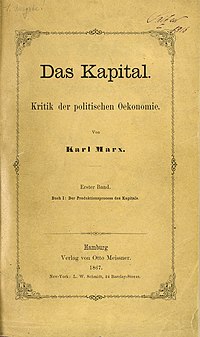
Photo from wikipedia
INTRODUCTION Nonsuicidal self-injury (NSSI) is a pervasive public health problem among adolescents. Self-criticism has been identified as an important risk factor for NSSI. Potential mediators of the relationship between self-criticism… Click to show full abstract
INTRODUCTION Nonsuicidal self-injury (NSSI) is a pervasive public health problem among adolescents. Self-criticism has been identified as an important risk factor for NSSI. Potential mediators of the relationship between self-criticism and NSSI and potential moderators that may exacerbate or buffer this association, however, have seldom been explored. The current study tested the mediating effect of hopelessness and the moderating effect of rumination. METHODS 915 Chinese participants (405 girls; mean age = 15.85, SD = 1.47) were recruited from junior and senior high schools. They completed questionnaires regarding self-criticism, hopelessness, rumination, and NSSI. RESULTS Self-criticism was significantly associated with NSSI, and this association was mediated by hopelessness. Rumination strengthened the association between self-criticism and hopelessness, as well as the association between hopelessness and NSSI. CONCLUSIONS Although this study is a cross-sectional design, these findings can help researchers and practitioners understand the relationship among self-criticism, hopelessness, rumination, and NSSI. Moreover, implications for preventions and interventions of NSSI were discussed.
Journal Title: Journal of adolescence
Year Published: 2019
Link to full text (if available)
Share on Social Media: Sign Up to like & get
recommendations!